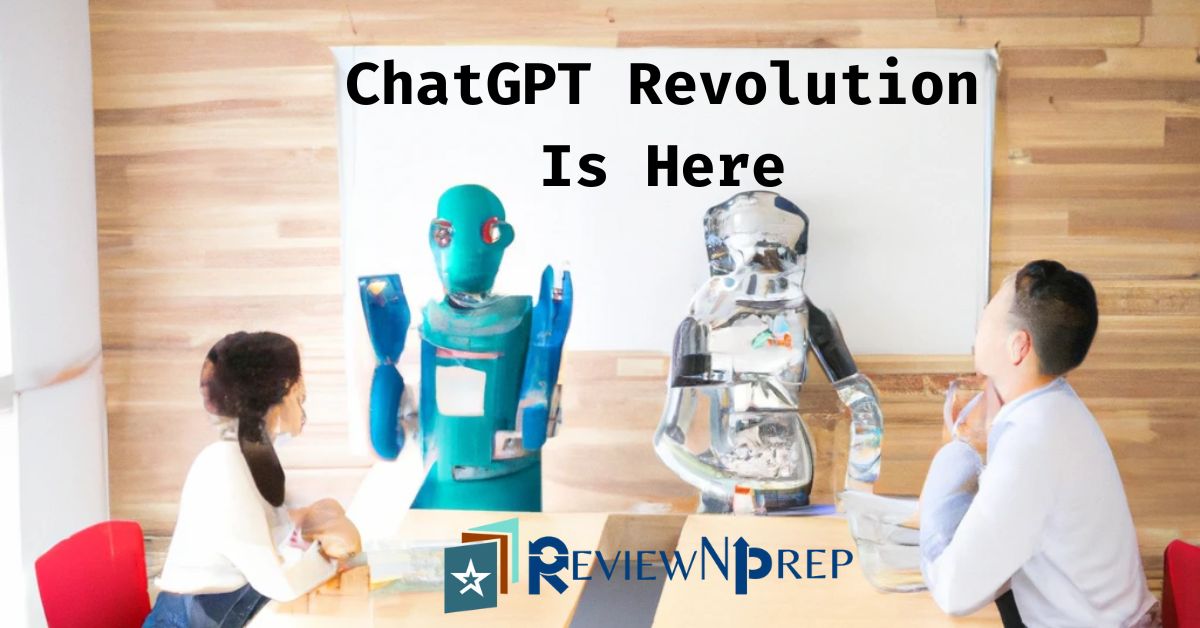|
|
As an AI language model developed by OpenAI, ChatGPT has made remarkable strides in taking over the digital world. OpenAI is a research organization that focuses on developing artificial intelligence in a way that is safe, ethical, and beneficial to humanity. OpenAI was founded in 2015 by a group of high-profile individuals in the technology industry, including Elon Musk, Sam Altman, and Greg Brockman.
With its ability to understand and generate human-like text, ChatGPT has become an indispensable tool for businesses, individuals, and organizations looking to improve their communication and streamline their workflows.
Discover how these beneficial use cases can make all the difference for your business and why investing in chatGPT today is worth it!
Chatbots using ChatGPT
As an established enterprise, you may have customers who are disgruntled and demanding. Some of them even resort to social media for obtaining redress; this can be a serious problem if not handled properly! Luckily for you, there is an effective solution – ChatGPT!
Consumers today communicate with enterprises via numerous channels such as email, phone calls and social media. Often the most effective manner of resolving issues is through conversational chatbots.
Chatbots are computer programs designed to simulate human conversations, and ChatGPT is one of the most powerful tools for creating them. With its advanced natural language processing (NLP) capabilities, ChatGPT can understand and respond to a wide variety of customer inquiries and provide personalized solutions.
This productivity-enhancing function enables users to chat faster and more efficiently than ever before. Towards achieving these ends, managers can also allocate resources effectively as well as allocate tasks among team members – all without disrupting their workflow!
This has made ChatGPT a popular choice for businesses looking to improve their customer experience and reduce the workload on their human support teams.
Content creation using ChatGPT
With its ability to generate high-quality human-like text, ChatGPT can be used to write articles, product descriptions, social media posts, and even entire books. This has made it a valuable tool for content marketers, publishers, and writers who are looking to produce large volumes of content quickly and efficiently. It can even help content creators to suggest blog topics, meta titles and help with SEO.
Word of caution – while ChatGPT is a powerful language model that can generate human-like text, not all content written by ChatGPT is guaranteed to be accurate. Like any machine learning algorithm, ChatGPT is only as good as the data it has been trained on, and it may not generate accurate responses if it has been trained on biased or incomplete data.
Moreover, ChatGPT is designed to generate text based on statistical patterns and associations in the input data, and it may not always understand the context or intent of the text it is generating. This can lead to nonsensical or inappropriate output, especially if the input prompts are unclear or ambiguous.
So, it’s important to use ChatGPT-generated text with caution, and to review and verify the accuracy of the content before publishing or sharing it. In some cases, it may be necessary to edit or modify the text generated by ChatGPT to ensure its accuracy and relevance for a specific audience or purpose.
Improvement in education using ChatGPT
ChatGPT can be used to create chatbots that provide personalized learning experiences to students. For example, a chatbot could ask a student a series of questions to determine their learning style and preferences, and then generate customized learning materials and resources based on their responses. ChatGPT can also be used to create chatbots that provide accessibility support to students with disabilities. For example, a chatbot could read texts aloud or provide visual descriptions for students with visual impairments.
ChatGPT powered chatbots can provide student support and answer common questions. The bot can also analyze a student’s writing and provide suggestions for improvement, such as correcting grammar or improving the organization of their ideas.
Improving accuracy of machine translation using ChatGPT
Machine translation is the process of translating text from one language to another using computer algorithms, and it requires an understanding of the linguistic structures and patterns in both the source and target languages.
Traditionally, machine translation systems relied on rule-based approaches or statistical models that required extensive human intervention and expertise to create accurate translations. However, with the advent of deep learning and neural network models like ChatGPT, machine translation has become more accurate and less dependent on human expertise.
ChatGPT is helping to improve the accuracy of machine translation by providing a powerful language model that can be fine-tuned on a wide range of multilingual datasets that contain parallel texts in multiple languages. This allows ChatGPT to learn the relationships and patterns between words and phrases in different languages, and to generate translations that are more accurate and natural-sounding. It easier for people to communicate across linguistic barriers.
Moreover, ChatGPT’s ability to generate human-like text makes it well-suited for improving the quality of machine-translated texts. By post-editing the output of machine translation with ChatGPT-generated text, it’s possible to correct errors and improve the naturalness and readability of the translated text.
Personalized recommendations using ChatGPT
ChatGPT can be used to generate personalized recommendations based on user preferences and behavior. Personalized recommendations using ChatGPT involve using the language model to analyze user behavior and preferences and generate customized recommendations for products, services, or content. Here’s how it works:
- User Data Collection: To generate personalized recommendations, ChatGPT first needs to collect data on user behavior and preferences. This can be done by tracking user inputs and activity on a website or app, analyzing user search queries, or gathering user feedback and ratings. Google Analytics is the most popular tool for this.
- Data Analysis: Once user data has been collected, ChatGPT can analyze the data to identify patterns and relationships between user behavior and preferences. This may involve using natural language processing (NLP) techniques to analyze user text, or machine learning algorithms to identify correlations between user actions and outcomes.
- Recommendation Generation: Based on the data analysis, ChatGPT can then generate customized recommendations for each user. For example, a chatbot might suggest products or services that are similar to those the user has previously purchased or searched for, or provide personalized content recommendations based on the user’s interests and preferences.
- Continuous Learning: To improve the accuracy and relevance of personalized recommendations, ChatGPT can be designed to continuously learn from user behavior and feedback. This can help refine the recommendations over time and provide an even more personalized experience for each user.
Related: How to start your career in Data Science and Machine Learning.
Personalized recommendations using ChatGPT are being used in a variety of industries, including e-commerce, entertainment, and media. By providing customized recommendations to users, businesses can improve customer satisfaction, increase engagement, and drive sales or conversions. Moreover, ChatGPT can help reduce the workload on human analysts and support staff, enabling businesses to provide personalized recommendations at scale.
Democratizing access to advanced NLP
Finally, ChatGPT is taking over the digital world by democratizing access to advanced NLP capabilities. In the past, only large tech companies had the resources to develop and train powerful language models like ChatGPT. However, with the release of pre-trained models like GPT-2 and GPT-3, even small businesses and individuals can access the same advanced NLP capabilities as the tech giants.
Conclusion
In conclusion, ChatGPT is taking over the digital world by revolutionizing the way we communicate, creating content, and translate between languages. Its advanced NLP capabilities have made it an indispensable tool for businesses, individuals, and organizations looking to improve their communication and streamline their workflows.
Some experts say that ChatGPT can serve as a replacement for search engines like Google or Bing. As AI continues to advance, we can expect ChatGPT to play an even larger role in shaping the future of the digital world.
Further Reading:
Check out the essential skills needed to become a top rated data scientist.
Recipe for success in IT field – Important skills you MUST HAVE!!.

